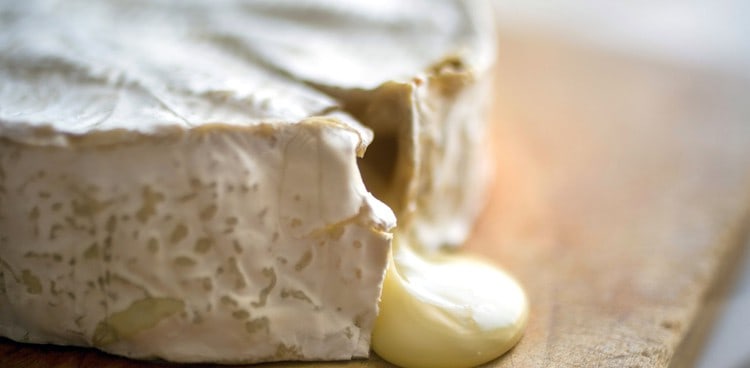“It’s very important to preserve diversity, even in microorganisms, and in particular in those we use for making food.”

Cheese lovers, brace yourselves. Apparently, some of your favorite types of French wedges are at risk of extinction, according to experts.
Lack of microbial diversity threatens blues and bries, pushing them closer to the endangered list and further accelerating the extinction of cheeses already at high risk like Camembert.
Quick science lesson: Most cheeses are crafted with the same basic ingredients: milk, salt, rennet, and bacteria. Those microorganisms are part of the process responsible for those distinct textures, smells, colors, and flavors we all love.
In 1897, a few biochemists isolated Penicillium candidum. This bacteria transformed a once orange, gray, and green Camembert to the white wheels we commonly see today. Since then, producers have become dependent on this single strain, primarily for aesthetic reasons.

“It’s very important to preserve diversity, even in microorganisms, and in particular in those we use for making food,” Jeanne Ropars, a research scientist specializing in evolutionary genetics and ecology at the French National Center for Scientific Research, tells culture.
The reliance on one specific bacteria to make certain cheeses is rooted in unsustainable industrial practices, which deplete biodiversity and threaten the foods we love to savor. “Diversity is necessary for the survival of species, without it, species are unable to cope with environmental change,” says Ropars.
The Irish potato famine in the 1800s represents a catastrophic case in point where farmers relied on a singular crop to feed their communities. A bacterial disease (Phytophthora infestans) sweeping the root vegetable caused widespread food devastation in the region, which lasted for years.
Scientists are monitoring Penicillium candidum’s degeneration, warning against the reliance on singular bacteria for French cheese production. It’s asexual, which means when mutations arise, there’s no way to avoid the destruction of the genes, says Ropars. This results in fewer spores forming by the microorganism, which is necessary in the inoculation—or ripening—process of certain soft cheeses like Camembert. In other words, once that biodiversity is lost, there’s no way to save the strain.
This decline in genetic diversity impacts the ability to produce dairy under the Protected Designation of Origin (PDO) standards, which regulates some of the most prestigious cheeses in France, like Camembert. Ultimately, the decline in this strain will force generation-old rules to adapt as Penicillium candidum becomes more challenging to source.
While the future of Penicillium candidum may look bleak, there are other bacteria that will still produce cheeses. For example, there is vast genetic diversity in Penicillium biforme—naturally present in raw milk—but the industry will have to get used to brie and Camembert with colorful hues and varying flavors, Ropars explains. Yet, in the grand scheme of it all, it’s a small price to ensure that future generations can indulge in the delicious cheeses we know and love.
Related:
- Can Cheese Packaging Be More Sustainable? European Lawmakers Think So.
- Stirring the Curd: What Does Sustainability Look Like?
- FireFly Farms Chèvre and Natural Wine are the Perfect Match



